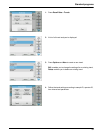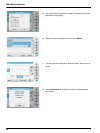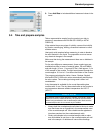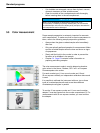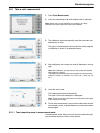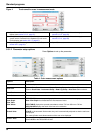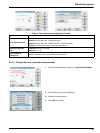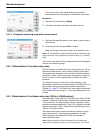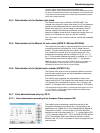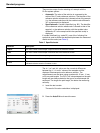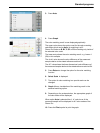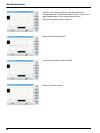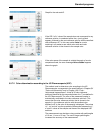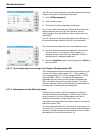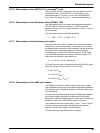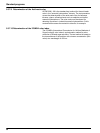
59
Standard programs
cuvettes. Hazen values below 50 should be measured in
50 mm cuvettes. Hazen values below 10 should be measured only with
the 50 mm cuvette that was used for the calibration. The reason for this
is that almost colorless products can cause false measurement results
due to the cuvette tolerances.
5.5.4 Determination of the Gardner color value
The Gardner color value is defined in DIN-ISO 4630. The
Gardner color values for lighter color tones (1 to 8) are based on
potassium-chloroplatinate solutions, while the color values for
darker color tones (9 to 18) are based on solutions of iron(III)
chloride, cobalt(II) chloride and hydrochloric acid. You can
determine Gardner values with all cuvette path lengths (but only
values up to Gardner color value 4 in 50 mm cuvettes).
The 10 mm and 11 mm cuvettes, however, usually offer adequate
accuracy.
5.5.5 Determination of the Mineral oil color value (ASTM D 1500 and ISO 2049)
The mineral oil color scale is used to evaluate the color of mineral
oil products such as lubricating oils, fuel oil, diesel fuel and
paraffin. The color scale starts at color value 0 for water-white,
non-colored oils and ends at 8 for very dark brown oils. The
substances are optically rated in multiples of 0.5 (0.5; 1.0; 1.5
etc.). The instrument displays the results in multiples of 0.1. For
samples whose color value is higher than 8, *** is displayed.
Note: Due to the strong color of the ASTM D 1500 color number, it is
only calculated for 11 mm round or 10 mm square cuvettes. No
calculation is carried out for the 50 mm path length.
5.5.6 Determination of the Saybolt color number (ASTM D 156)
The Saybolt color scale is used to evaluate refined oil products
such as petrol and kerosene, as well as petroleum waxes and
pharmaceutical white oils.
The Saybolt color properties are comparable to those of the
Hazen scale (APHA). The Saybolt color scale starts at color value
+30 (lightest color, corresponds to approx. 8 to 10 Hazen) and
ends at -16 (strongest color, corresponds to approx. 350 Hazen).
The measurements can be taken in cuvettes with path lengths of 10 mm,
11 mm or 50 mm. A longer path length increases the measurement
accuracy (50 mm recomended).
5.5.7 Color determinations only by LCS IV
5.5.7.1 Color determination according to the European Pharmacopoeia (EP)
The method used to determine coloration according to the
Europeean Pharmacopoeia (Pharm.Eur.) corresponds to the
specifications in Chapter 2.2.2 of the Pharmacopeia "Degree of
Coloration of Liquids", in which a total of 37 color reference
solutions for the color tones yellow (Y1 – Y7), green-yellow (GY1
– GY7), brownish-yellow (BY1 – BY7), brownish (B1-B9) and red
(R1-R7) are defined. Each color reference solution is clearly
defined in the CIE L*a*b* color space in terms of brightness, hue
and saturation.



